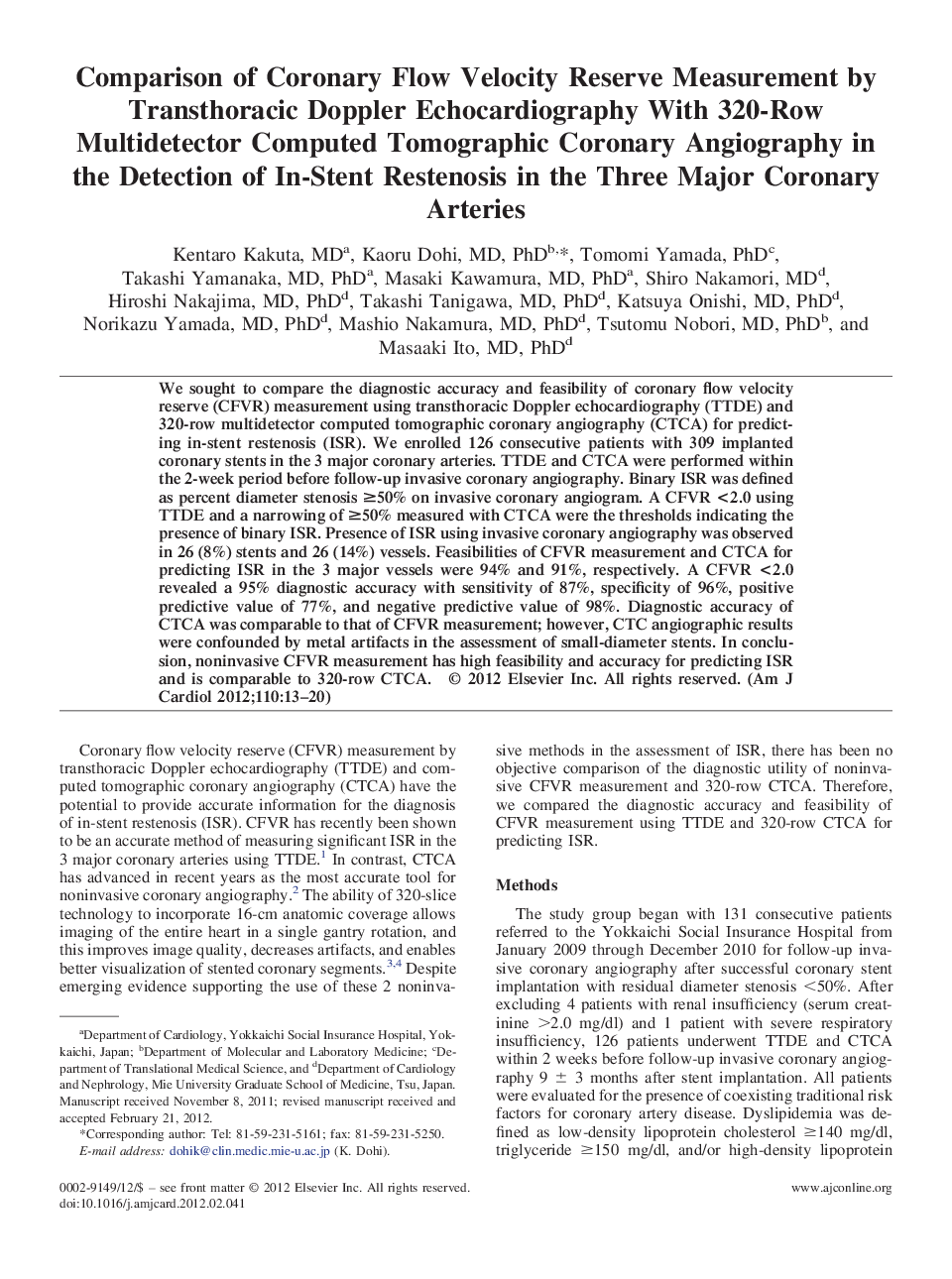| Article ID | Journal | Published Year | Pages | File Type |
|---|---|---|---|---|
| 2855648 | The American Journal of Cardiology | 2012 | 8 Pages |
Abstract
We sought to compare the diagnostic accuracy and feasibility of coronary flow velocity reserve (CFVR) measurement using transthoracic Doppler echocardiography (TTDE) and 320-row multidetector computed tomographic coronary angiography (CTCA) for predicting in-stent restenosis (ISR). We enrolled 126 consecutive patients with 309 implanted coronary stents in the 3 major coronary arteries. TTDE and CTCA were performed within the 2-week period before follow-up invasive coronary angiography. Binary ISR was defined as percent diameter stenosis â¥50% on invasive coronary angiogram. A CFVR <2.0 using TTDE and a narrowing of â¥50% measured with CTCA were the thresholds indicating the presence of binary ISR. Presence of ISR using invasive coronary angiography was observed in 26 (8%) stents and 26 (14%) vessels. Feasibilities of CFVR measurement and CTCA for predicting ISR in the 3 major vessels were 94% and 91%, respectively. A CFVR <2.0 revealed a 95% diagnostic accuracy with sensitivity of 87%, specificity of 96%, positive predictive value of 77%, and negative predictive value of 98%. Diagnostic accuracy of CTCA was comparable to that of CFVR measurement; however, CTC angiographic results were confounded by metal artifacts in the assessment of small-diameter stents. In conclusion, noninvasive CFVR measurement has high feasibility and accuracy for predicting ISR and is comparable to 320-row CTCA.
Related Topics
Health Sciences
Medicine and Dentistry
Cardiology and Cardiovascular Medicine
Authors
Kentaro MD, Kaoru MD, PhD, Tomomi PhD, Takashi MD, PhD, Masaki MD, PhD, Shiro MD, Hiroshi MD, PhD, Takashi MD, PhD, Katsuya MD, PhD, Norikazu MD, PhD, Mashio MD, PhD, Tsutomu MD, PhD, Masaaki MD, PhD,
